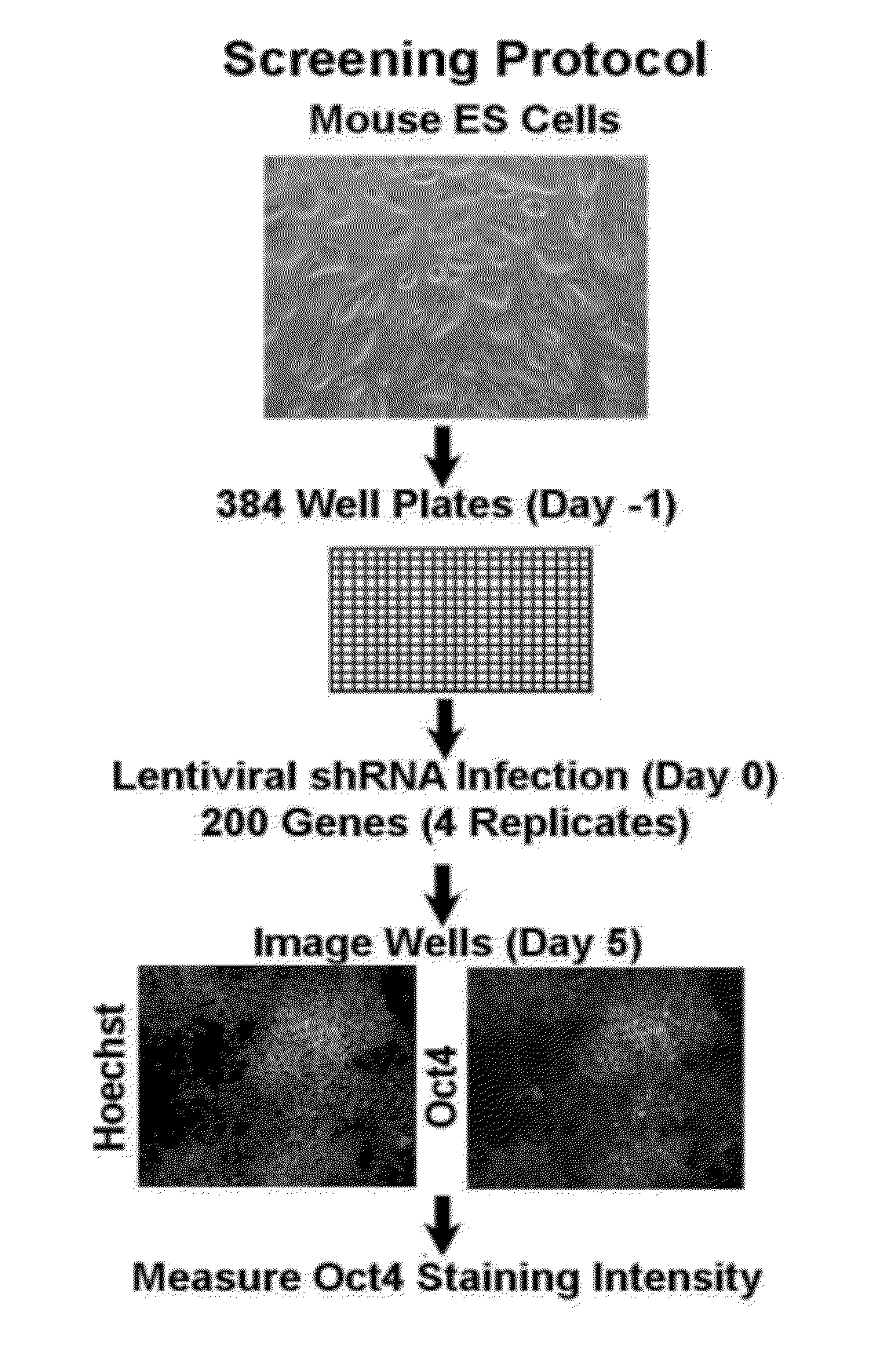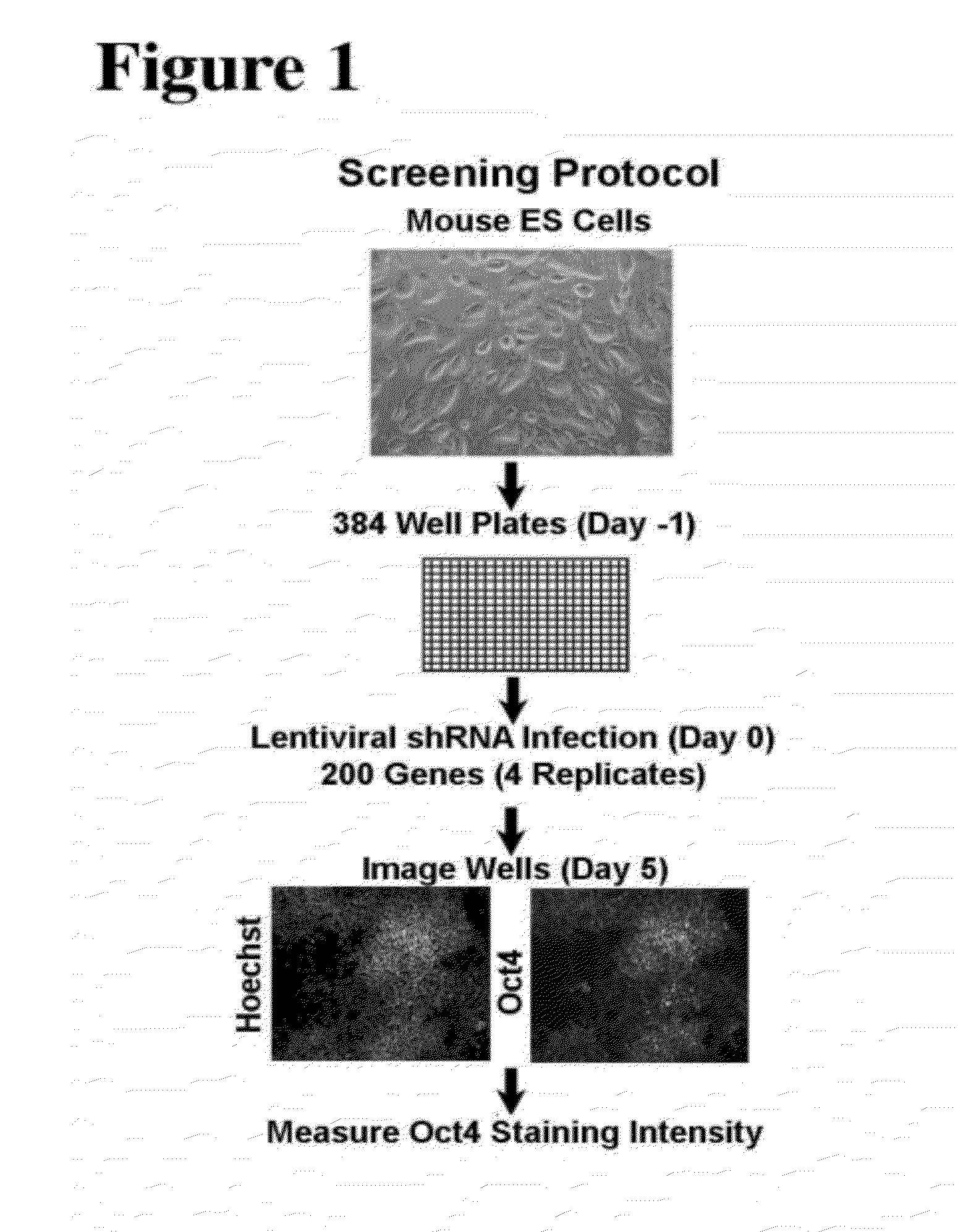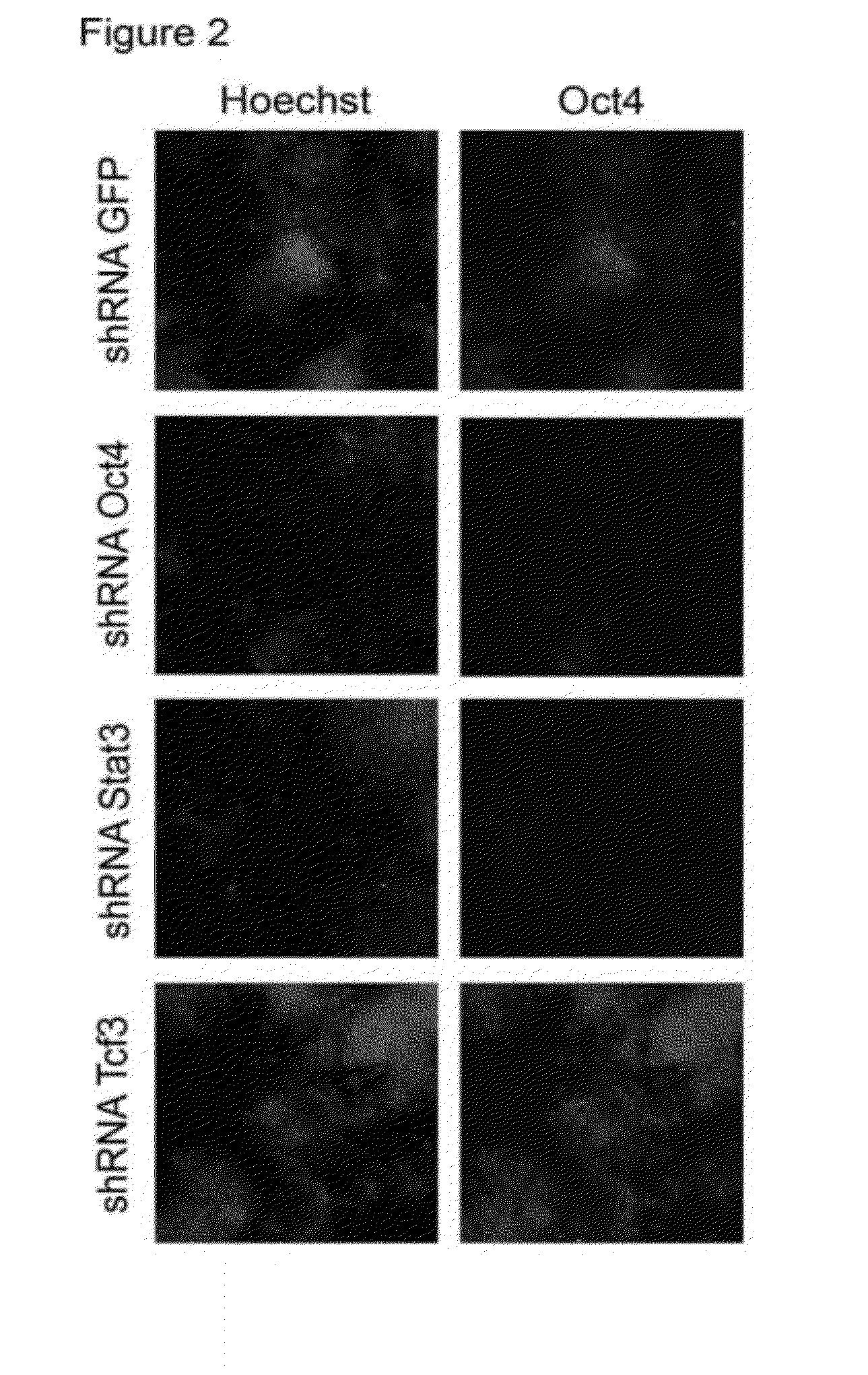Compositions and methods for enhancing cell reprogramming
a cell reprogramming and cell technology, applied in the field of compositions and methods for enhancing cell reprogramming, can solve the problems of limiting the use of es cells in regenerative medicine applications, unable to provide a general approach to and unable to achieve the general approach of generating large numbers of patient-specific cells of numerous diverse types
- Summary
- Abstract
- Description
- Claims
- Application Information
AI Technical Summary
Benefits of technology
Problems solved by technology
Method used
Image
Examples
example 1
Screen to Identify Pluripotency Regulators
[0131]This Example describes an unbiased approach to identify transcriptional factors and signaling components involved in the regulation of pluripotency in ES cells. A short hairpin RNA (shRNA) library was used to perform a screen for factors that are involved in regulating pluripotency of mES cells. The lentiviral short hairpin RNA (shRNA) library targets 16,009 mouse genes, of which 200, 1316 and 1800 have been annotated as a chromatin factor, signaling component or transcription factor, respectively. On average 4-5 hairpins have been generated for each gene to provide redundancy and to address potential off-target effects. The library is described in Moffat, J., et al., Cell, 124(6):1283-98, 2006.
[0132]The initial screen was done with the chromatin factor set. FIG. 1 shows a schematic overview of the screen. Mouse embryonic stem cells were seeded in a 384 well plate and each well was infected with an individual shRNA. One day post infect...
example 2
Effect of Inhibiting H3K9 Methyltransferases on Generation of iPS Cells
[0139]Applicants next sought to determine the effect of inhibiting H3K9 methyltransferases on generation of iPS cells. For some experiments, Applicants used “secondary” mouse embryonic fibroblasts (MEFs) that express murine reprogramming factors Klf4, Sox2, and Oct4 under the control of a doxycycline (“dox”)-inducible promoter. These cells, which are referred to as “2nd KSO” cells for short, reprogram to form iPS cells at a low frequency upon treatment with doxycycline, as described in the literature. The cells contained an Oct4-neo transgene, thereby allowing use of G418 to select for cells that were reprogrammed to pluripotency (as evidenced by expression from the Oct4 promoter).
[0140]Applicants plated 2nd KSO cells into individual wells of 6-well dishes (100,000 cells per well) in mES cell medium (3 ml) on day 0. On day 1, cells in individual wells were transfected with siRNA (Ambion) designed to inhibit expre...
example 3
Inhibiting Suv39h1 and / or Suv39h2 Increases Reprogramming Efficiency
[0143]The experiments described in Example 2 were performed using a line of secondary MEFs in which expression of reprogramming factors was induced by dox treatment. In order to show that the increased reprogramming efficiency was not dependent on use of this system, Applicants performed “conventional” reprogramming experiments in which three dox-inducible retroviruses were used to express Klf4, Sox2, and Oct4. Primary MEFs harboring a Nanog-GFP transgene were used, thereby allowing identification of reprogrammed cells based on GFP expression. Cells were transfected in 10 cm plates with siRNA designed to inhibit Suv39h1, siRNA designed to inhibit Suv39h2, or a combination of the two siRNAs, and were maintained in culture. After 3 days, they were plated in 6-well plates at the same density that 2nd MEF. Colonies were counted 21 days after siRNA transfection and dox induction. As shown in FIG. 4A, inhibiting either Su...
PUM
 Login to View More
Login to View More Abstract
Description
Claims
Application Information
 Login to View More
Login to View More - R&D
- Intellectual Property
- Life Sciences
- Materials
- Tech Scout
- Unparalleled Data Quality
- Higher Quality Content
- 60% Fewer Hallucinations
Browse by: Latest US Patents, China's latest patents, Technical Efficacy Thesaurus, Application Domain, Technology Topic, Popular Technical Reports.
© 2025 PatSnap. All rights reserved.Legal|Privacy policy|Modern Slavery Act Transparency Statement|Sitemap|About US| Contact US: help@patsnap.com



